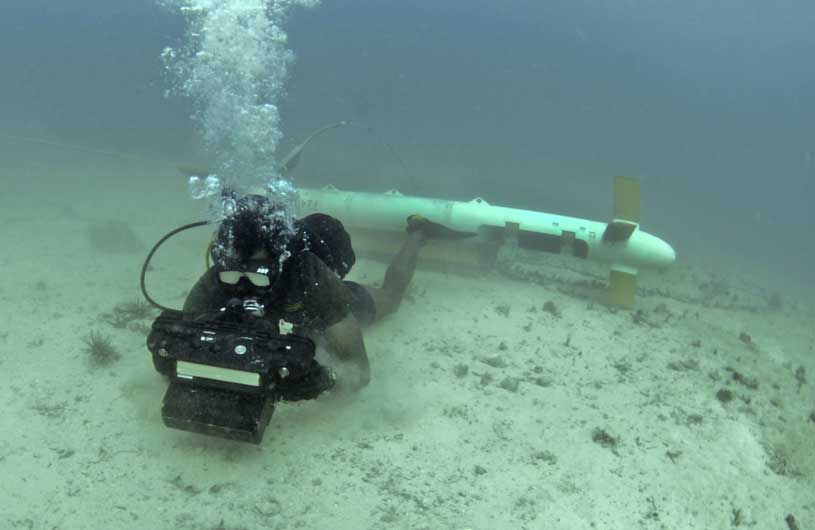Navy opts for Alternative 2 for Marianas training

Explosive Ordinance Disposal 2nd Class Adam Pierce assigned to Explosive Ordinance Disposal Mobile Unit 1, tests an underwater imaging system device after locating an airborne mine countermeasures device. EODMU-1 is deployed to Commander, Task Group 56.1 providing mine countermeasures, explosive ordinance disposal, salvage-diving, counter-terrorism, and force protection in the U.S. 5th Fleet area of responsibility. (U.S. NAVY/JAYME PASTORIC)
ASAN, Guam—The U.S. Department of the Navy announced Friday its decision to implement its Preferred Alternative, Alternative 2, to continue training and testing activities within the Mariana Islands Training and Testing Study Area.
Alternative 2—as described in the MITT Final Supplemental Environmental Impact Statement/Overseas Environmental Impact Statement—will allow the Navy, other U.S. military services, and the U.S. Coast Guard to fully meet current and future training and testing requirements.
The Navy made its decision after considering its strategic and operational needs; the potential impacts training and testing activities may have on human, natural, and cultural environments; and comments from elected officials, government agencies, organizations, and the public on the proposal and environmental analysis. The Navy considered comments received following the publication of the Final Supplemental EIS/OEIS. New and major substantive comments were addressed in the Record of Decision.
The Navy is committed to being a good steward of the environment and will continue to implement mitigation measures to avoid or reduce potential environmental impacts from training and testing. In addition, the Navy will continue to work with its valued partners in the Commonwealth of the
Northern Mariana Islands and Guam in an enduring process to share information and address concerns.
The Record of Decision, Final Supplemental EIS/OEIS, and supporting documents are available online at www.MITT-EIS.com. Printed copies of the Record of Decision have been sent to mayors’ offices in the villages of Hagåtña, Mangilao, and Dededo in Guam, and mayors’ offices on Saipan, Tinian, and Rota for public viewing. (PR)























